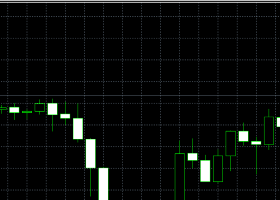
The range-bound EUR/USD continues to have a bias towards further upside as euro proves more resilient than expected.
The EUR/USD exchange rate continues trading in a sideways range which has highs at roughly 1.15 and lows at 1.05.
We are currently towards the upper end of the range where it has settled at 1.1275.
The Feb 11 highs at 1.1376 are key and so a break above them would probably give buyers the confidence to push the euro higher.
Such a move would probably reach support and resistance from previous highs at 1.1490, where buyers are likely to encounter more selling which could potentially halt the rally.
Fundamentals are also pointing to a possible rise in the EUR/USD in the short-term as exchange rates now seem to have already accounted for central bank policy divergence.
By "central bank policy divergence" it is meant that the Federal Reserve (Fed) continues to expect to raise rates in 2016, potentially limiting money supply, whilst the European Central Bank (ECB) will probably increase printing money – normally the extreme difference between these polices (the divergence) would cause a rise in the dollar against the euro.
However, Unicredit’s Tobias Ruhl, thinks the difference in monetary policy has already been absorbed or accounted for in the exchange rate:
“The ECB is increasing its bond purchases, the liquidity supply and thus the degree of expansion, while the Fed is talking about continuing interest-rate increases. This shows that market players have already factored in a very large amount of this two-way monetary policy split.”
The view is supported by Helaba economics:
“With regard to the euro it is worth mentioning that an appreciation is on the books despite the continuing divergence between monetary policies on either side of the Atlantic.”
The unexpected appreciation of the euro following the last two monetary policy meetings of the ECB even though they increased stimulus on both occasions has brought in a new era of monetary policy whereby the euro now fails to weaken despite more stimulus.
Add to this pressure on the dollar from the possibility that Donald Trump could win the presidency, withdrawing US from international trade relations with his isolationist agenda and the dollar currently looks more vulnerable than the euro.
Copy signals, Trade and Earn $ on Forex4you - https://www.share4you.com/en/?affid=0fd9105
Lloyds Upbeat about U.S Fundamentals
Despite most analysts expecting weakness from the dollar in the short-term, Lloyds views the US economy as showing robust fundamentals overall:
“Resilient domestic demand is expected to continue to drive the economy this year, more than offsetting weak net exports resulting from increased global economic uncertainties and the strong dollar. Private consumption should remain supported by employment growth and lower energy prices. Nonfarm payrolls continued to increase at a robust pace in the first two months of the year, while the unemployment rate fell to a seven-year low of 4.9%.”
They also forecast first quarter GDP data to rebound to between 2.0% and 2.5% after a poor Q4 which saw only 1.0% growth.
Lloyds mention Fischer’s point about inflation showing signs of revival:
“Fed Vice Chair Fischer recently noted the ‘first stirrings’ of an increase in inflation. Annual headline CPI inflation fell back to 1.0% in
February from 1.4% in January, but the core measure – which excludes food and energy – increased to 2.3%, the highest level since May 2012.”
According to their view the main threat to U.S growth stems from global factors.
Economic Data
Data from the Euro-zone includes much sentiment data, such as the German and Euro-zone ZEW Economic Sentiment index which is forecast to rise on Tuesday March 22 to 5.9 from 1.0 previously, and the IFO Sentiment gauge, which is forecast to come out at 106.0 from a current 105.7. The IFO has fallen three months in a row, which is not a very positive sign for sentiment going forward.
On Thursday there are preliminary March PMI’s for The Euro-zone, and Manufacturing PMI is expected to rise to 51.3 from 51.2, whilst Services is forecast to remain unchanged at 53.3.
For the dollar, the main release is Core Durable Goods for February, scheduled for Thursday, which is forecast to come out at 0.4% from 1.2% previously.
On the same there is day Jobless Claims, and Manufacturing PMI is expected to rise to 51.5 from 51.3 previous.
Final Estimate Q4 GDP on Friday March 25 is forecast to come out at 1.0% (no-change) – it was 2.0% in Q3.
It’s also a busy week for Fed Speakers, with remarks by District Presidents Lacker (non-voting), Lockhart (non-voting), Evans (alternate), Harker (alternate), Bullard and Williams (non-voting).
Lockhart’s remarks on Monday will be of particular interest to the markets given his position as a centrist on the Committee.
“Overall, we expect the tone to reflect the Fed statement's recent dovish lean.” According to Brokers TD Securities.
They are unlikely to change the market’s view of the Fed, however, given the short time which has elapsed since the FOMC.


